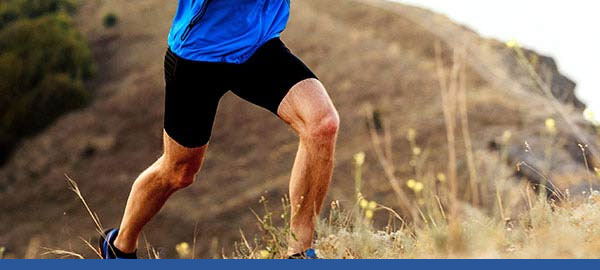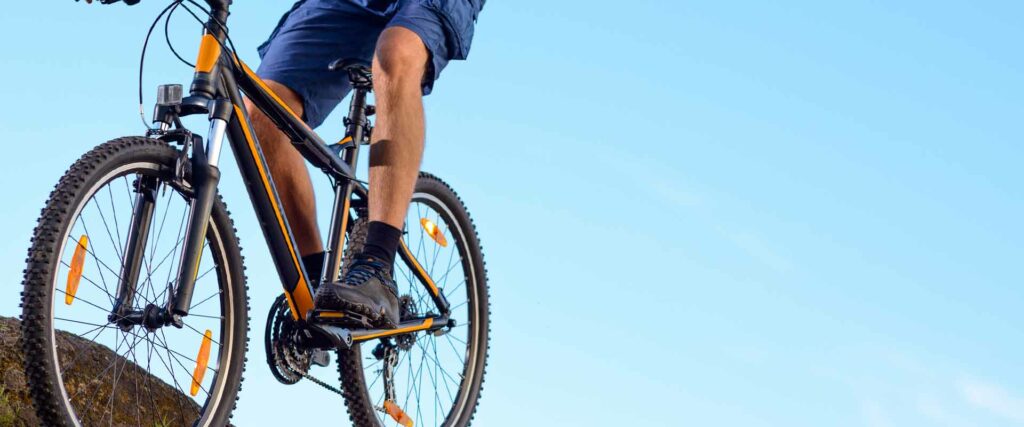The Southern Approach Outpatient Knee Replacement Questions and Answers
At Southern Sports Medicine, we pioneered the Southern approach to the knee, and are the experts in outpatient knee replacement. See our FAQs below where we answer most questions. We are also happy to answer any additional specific questions you may have.
Feel free to Contact us, or Make an Appointment.


Table of Contents:
What else can you tell me about the procedure?
The technique is different from the typical “down the front” replacement technique because it:
Can you explain some of the benefits of this procedure?
What if I need both knees done?
This is such a better way to do it, why aren’t more surgeons doing it this way?
Who is the ideal candidate?
What if I live outside the area?
What can and can’t I do with a Southern Approach knee?
The “Southern Approach” Outpatient knee replacement, also known as a minimally invasive, or quad-sparing same day knee replacement, is a high-tech alternative knee replacement surgery option which allows patients to have the procedure, and then go home, full weight bearing, within hours. Drs. Swiderek and Gautsch are among the most experienced outpatient knee replacement surgeons, having performed thousands of “Southern Approach” Knee replacements, including the first successful outpatient total knee replacement in Tennessee, over 10 years ago. They still perform more outpatient surgery center knee replacements than all other surgeons in the region.
The “Southern Approach” is a tourniquet-less, muscle and soft tissue sparing surgical technique which they have developed and continually improved, to minimize the trauma, pain, bleeding and scarring associated with the traditional “down the front” approach. With the “Southern Approach” Dr. Swiderek and Dr. Gautsch enter the knee from the side, going under the Quad and between or around the important structures, without the usual cutting of the quadriceps muscle or tendon. It also utilizes a very advanced 3D stereoscopic computer guidance workstation with robotic options for extremely high precision surgery. Protecting, and carefully leaving the quadriceps muscle/tendon and other structures intact, with the precision of 3D computer guidance, means immediate use, a much faster recovery, and a return to a higher of function.
“Southern Approach” knee replacement patients are up walking with full weight-bearing on the knee within an hour of the procedure, and within a few hours, go home. They also don’t typically need walkers, canes or crutches in their recovery and are usually moving more and functioning better by two weeks than many traditional replacement patients do even after a few months. Our recovery protocol has “Southern Approach” patients using, bending and straightening the knee over 120-130 degrees by 2 weeks — more than the average traditional knee replacement ever achieves.
Pioneers of the procedure, we successfully completed and reported on the first 100 “Southern Approach” Outpatient Knee Replacement surgeries, performed in 2017 at the Indian Lake Surgery Center, which was designed specifically for it. Since then, Dr. Swiderek and Dr. Gautsch have performed thousands of “Southern Approach” surgeries for people who are now back hiking, climbing, biking, swimming, hunting, kayaking, skiing, traveling, and competing in Golf, Pickle ball, doubles tennis and more — and finally enjoying their lives again, from all over the US, and Canada!
“Southern Approach” Knee Replacement patients:
Outpatient knee replacement, also known as same day knee replacement, is a high tech knee surgery option which allows patients to have the procedure, and then go home, full weight bearing, within hours of the operation. Dr. Gautsch is one of the most experienced outpatient knee replacement surgeons, having performed thousands, including the first successful outpatient total knee replacement in Tennessee over 7 years ago. He still performs more outpatient surgery center knee replacements than all other surgeons in the region. The “Southern Approach” is a muscle and soft tissue sparing surgical technique which Dr. Gautsch developed to minimize the trauma, pain, bleeding and scarring associated with the traditional “down the front” approach. With it, Dr. Gautsch enters the knee from the side, going under and between the important structures without the usual cutting of the quadriceps muscle/tendon. It also utilizes a very advanced 3D stereoscopic computer guidance system workstation for extremely high precision surgery. Leaving the quadriceps muscle/tendon and other structures intact allows a much faster and higher level return to function as well as the ability to walk on it right away and go home. In 2017 he successfully completed the first 100 of these surgeries at the Indian Lake Surgery Center, whose operating rooms he designed specifically for it. Since then, Dr. Gautsch and his highly skilled team have performed thousands of surgeries at ILSC. People come to ILSC for the procedure from all over the US and then:
- walk within hours, and go home
- are driving on their own within 7-10 days,
- are going for extended walks outside, and start golf-range levels of activities within 2 weeks
- add back most all other physical activities at their own pace as comfort allows
- recover with no restrictions on weight bearing or range of motion and
- progressively achieve normal or near normal range and knee function within 4-6 weeks
The “Southern Approach” knee:
-Is performed through a side incision, not down the front
-Cuts no muscles or tendons
-Typically replaces just the worn surfaces of the knee
-Is performed as an outpatient at the surgery center instead of the hospital
-Allows all patients to go home the same day
-Facilitates an accelerated recovery and rapid return to function
-Under normal circumstances can reasonably be expected to last for 25 to 30 years
-Is always performed without a tourniquet, allowing normal blood flow to continue throughout the surgery
-Preserves other normal structures as well as their function, like the anterior fat pad for kneeling
-Avoids all the major nerves and blood vessels which minimizes bleeding and aids healing
-Doesn’t require general anesthesia or a breathing tube
-Uses ultrasound-guided selective nerve blocks with long-acting local anesthesia and IV sedation
-Uses real-time 3D stereoscopic digital data mapping of the knee
-Uses computer-assisted navigation for precise ligament balancing, positioning, and alignment
-Allows for full weight bearing and walking to begin immediately
-Typically achieves normal range knee motion in two to four weeks
One of the biggest benefits of having the procedure done this way is that healthy active people, with painfully worn or arthritic knees which are otherwise structurally sound, can essentially get new durable surfaces in the knee without affecting the structure, and do so without the usual cutting of the muscles and tendon, as is done routinely with a traditional knee replacement. Instead, by approaching the knee from the side under and around the soft tissues, we can perform the knee equivalent putting a crown on a structurally good tooth, instead of replacing the whole structure. You get the new surfaces you need, but keep what’s good without doing collateral damage to your underlying structure, bone, muscles, tendons, ligaments, and kneecap. What is still good about your knee remains good, and what is bad get renewed.
Designed specifically for healthier, active individuals, the procedure allows highly motivated people a more active, functional recovery and quicker return to almost everything. Since the Southern Approach does not cut any muscles or tendons, there is also no danger of pulling something apart after surgery, or even a need to wait for it to heal before using it. You can start moving and using it right away and progress at the pace your fitness and comfort allows. What is more, we have developed anesthetic techniques that utilize nerve blocks, using local and regional anesthesia, rather than general. In the vast majority of cases, our patients quietly snooze through the procedure with some sedation, but with no breathing machine or tube down the throat. You’ll be back awake and comfortably up walking within just an hour or two of the procedure and then shortly after, head on home. No hospitals, overnight hospital stays, or exposure to hospitalized patients and staff.
The Southern Approach Knee replacement procedure is performed with extremely high precision, in a “digital OR” designed specifically for it, which features multiple computers, including very large scale mounted monitors which the surgery team uses for visualization, stereoscopic infrared digital cameras, femoral and tibial specific optical tracking arrays, and a networked, sterile field 3D virtual reality computer workstation for the surgeon. By digitally mapping and modeling the knee, and entire leg as part of the procedure, with real time tracking and verification, all size, position and alignment parameters are customized and effected in real time based on each patients individual ligament length, balance and bone anatomy, with very high precision — more accurately and less invasively than in a traditional replacement procedure.
Better, less invasive, more precisely sized and aligned, preserving normal structures, put in from the side without cutting any muscle or tendon, and a faster recovery — it is truly a game changer, ushering in a new era in knee replacement.
We prefer to do them sequentially rather than at the same time. This is a common question because often people have problems with the other knee as well, and ultimately may need both to be treated to get back to everything. It is technically possible to do both knees at the same time, and it seems as if it should shorten the overall recovery time, however that has not been our experience. When both knees are done together, recovery moves slower and we lose some of the Southern Approach benefits. It makes sense that double surgery means double the stress to the body, but the data shows that double stress more than doubles the risk of something bad happening. While the risk of something bad happening with this surgery is relatively low, no surgery is risk free. We don’t do both at the same time, and definitely not as an outpatient. Double knee replacement must instead be done at a hospital. What’s more, in our experience, those patients also don’t typically achieve the same high levels of function. Their energy, attention, and efforts are divided when trying to rehab both knees at the same time. It’s a little like having twins, people do it, but it is tough to give both of them one’s full attention. We don’t do both at the same time, and definitely not as an outpatient. Double knee replacement must instead be done at a hospital. We prefer to separate the two knee procedures by a minimum of four weeks at the surgery center. That’s long enough for the first knee to become the “good knee” to recover the second. It also turns out that done this way, people often still recover in overall the same amount of time and achieve better outcomes than when both knees are done at the same time.
Surgery is a set of skills which is taught over the course of many years, essentially as an apprenticeship. One typically learns those skills from other surgeons. Like learning to fly a plane, it’s best learned from an expert, and can take years to master. Consequently there are few surgical innovators. All new surgical techniques take time to develop and even more years to gain wide acceptance. As an Orthopedic Surgeon who was first a bioengineer, Dr. Gautsch developed the Southern Approach over the course of 15+ years. Now that it has proven beneficial for a large number of patients, other surgeons are starting to learn it. Since 2017 we have performed thousands, documented the results, and subsequently taught a number of visiting surgeons, who also want to offer this improvement to their patients. Several times a year Dr. Gautsch travels to various parts of the country to discuss and demonstrate the technique, and also participates with Orthopedic manufacturers and other engineers in the design of new knee replacement instruments and computer navigation applications. He also occasionally travels to surgical labs across the country, including most recently to Northern California where he taught Stanford University surgeons. Although much better for the patient, the technique is more technically demanding than the traditional approach, both for the surgeon to learn and to get good at. It also requires very specialized equipment. Dr. Gautsch designed and equipped the Indian Lake Surgery Center in Hendersonville specifically for these outpatient joint replacement procedures. Over the next several years the Southern Approach will undoubtedly become the technique of choice for patients and their surgeons around the country.
The ideal candidate for the Southern Approach knee replacement surgery is someone who is otherwise healthy and has remained active despite their knee problem. The vast majority are still working but the knee is causing problems there or after. They’ve had symptoms for at least several months or more and have already treated with other doctors for it, trying medications, injections, maybe therapy and or have had arthroscopy or previous knee surgery. Despite these treatments, the knee continues to have problems. X-rays, MRIs or Arthroscopy has shown that the knee is getting worn out in some area, and/or they’ve been told by their doctor that they’ll need knee replacement. If this sounds like you, and you feel as if the knee has become a quality of life issue, limiting the activities you enjoy, it’s probably time.
Unfortunately, not everyone is a candidate for this new, better procedure. Whatever the actual age, physically elderly, mostly sedentary individuals, people with more than minor health, cardiac or pulmonary problems, or a BMI over 40, or poor physical conditioning, individuals with diabetes and a hemoglobin A1c over 7, or anyone who has been told that they are not a good candidate for traditional knee replacement, is not going to be good candidates for this procedure. The Southern Approach Knee was designed to keep active healthy people active. It allows the right candidates to significantly accelerate their rehab and recovery process. For this a patient has to be not only motivated but also physically able to move quickly through the process at low risk, to fully experience its benefits.
Most of our Outpatient Knee Replacement patients live in Gallatin, Hendersonville, Nashville, or one of the surrounding towns or counties — usually within a 1-2 hour drive. But we also routinely treat people from all over East and West Tennessee, Kentucky, Georgia, Alabama, and as far away as Florida, Iowa, Missouri, Indiana, Illinois, Ohio, Arkansas, and the Carolinas. If coming from more than a few hours away, we can make most arrangements over the phone or by telemedicine, and you’ll need to identify somewhere nearer to home to do your therapy. We recommend spending the night before surgery at the Hendersonville Hampton Inn and Suites, or Fairfield Inn and Suites near the Indian Lake Surgery Center. Most people are then able to safely travel home just 3-4 hours after surgery. Our head physical therapist can be available to discuss our PT protocol with your local therapist if you live more than an hour away. We will want to see you back for a two week follow up, and speak on the phone, or by telemedicine, again about 4 weeks later to be sure you have achieved all of our goals.
The materials that we use are extremely durable. The metal is a super alloy of cobalt, chrome, molybdenum, vanadium, and titanium and will still be solid and shiny long after all of us have turned to dust. The non-metal parts are made of highly cross-linked ultra high molecular weight polyethylene. This the same material as is used in blast shields, bulletproof vests, and artificial ice-skating rinks.
In 25 years using these materials in various joint replacements, we’ve not seen any of our patients wear one out. However, bone is a living tissue and slowly over time can change its shape depending on how it is stressed. It is our recommendation that people don’t take up running or jumping activities. That kind of repeated jarring could potentially cause early bony loosening.
Everything else is OK: golf, gardening, water skiing, snowboarding and snow skiing (not jumping), hiking, climbing, horseback riding, pickle ball, Doubles tennis (probably not singles), and unlimited walking, biking, swimming, everything else like that. Contact us, or Make an Appointment.
Dr Gautsch discusses “Southern Approach” Outpatient Knee Replacement News 5+
#1 Dr. Gautsch answers FAQs: “How do I know if it’s time for a Knee Replacement?”
#2 Dr. Gautsch answers FAQs: “What’s different about the “Southern Approach” Knee Replacement?”
#3 Dr. Gautsch answers FAQs: From the side?? How is the “Southern Approach” Knee Replacement better?
#4 Dr. Gautsch answers FAQs: “Am I a good candidate for Outpatient Knee Replacement from the side?”
#5 Dr. Gautsch Answers FAQs: “What will my Knee Replacement recovery be like?”
#6 Dr. Gautsch Answers FAQs: “How long should my Knee Replacement last?”

Additional Services You May Like
- Outpatient Knee Replacement Therapy
- Shoulder Arthroscopic Rotator Cuff Repair Surgery
- Labral/Ligament Repairs
- Computer Navigated Knee Replacement Surgery
- Minimally-Invasive/ Arthroscopic Joint Surgery
- Onsite Physical Therapy Programs
- Shoulder Repair Treatments
- Knee Arthroscopic Surgery
- Biceps Tendon Surgery
- Shoulder Arthroscopy

